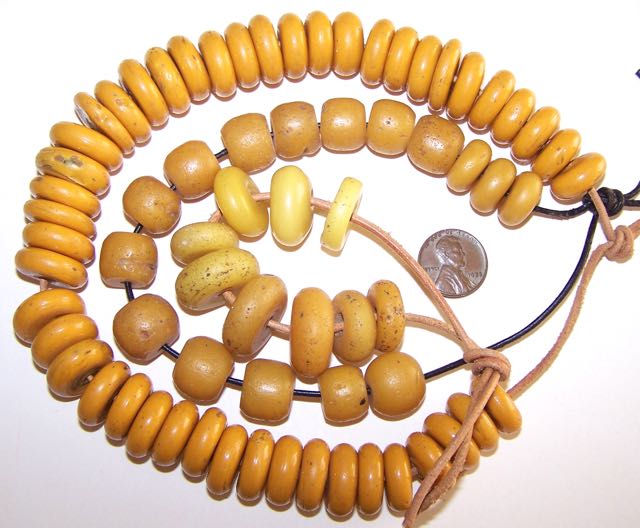| And the answer is... | |||||
| Re: One similar disk bead on a Levin & Co. sample card -- Rosanna | Post Reply | Edit | Forum | Where am I? | |
07/21/2019, 10:57:34
Conclusion - high lead content glass was used. The highest lead content glass is over twice as dense as soda glass, and almost twice as dense as "typical lead crystal". Because these disks are heavy, I've had a hard time using any more than a few in necklaces - otherwise the final result is a neck strain!
From Wikipedia:
The density of soda glass is 2.4 g/cm3 or below, while typical lead crystal has a density of around 3.1 g/cm3 and high-lead glass can be over 4.0 g/cm3 or even up to 5.9 g/cm3.
Lead glass can contain 18% up to 40% by weight lead oxide.
A rough density measurement on one of the largest disks in this photo was 3.4 g/cc. For comparison, I did a cylindrical Venetian fancy bead (2.7 g/cc) and a Hebron disk bead (2.3 g/cc). These values are approximate but shows that the Middle Eastern Hebron glass probably had no lead content, while the Venetian "regular" glass had some. Several bead people have told me that they can judge by feel the higher density of Venetian beads which is one way they decide if they are Venetian.

Modified by Rosanna at Sun, Jul 21, 2019, 11:28:37
All rights reserved by Bead Collector Network and its users
|